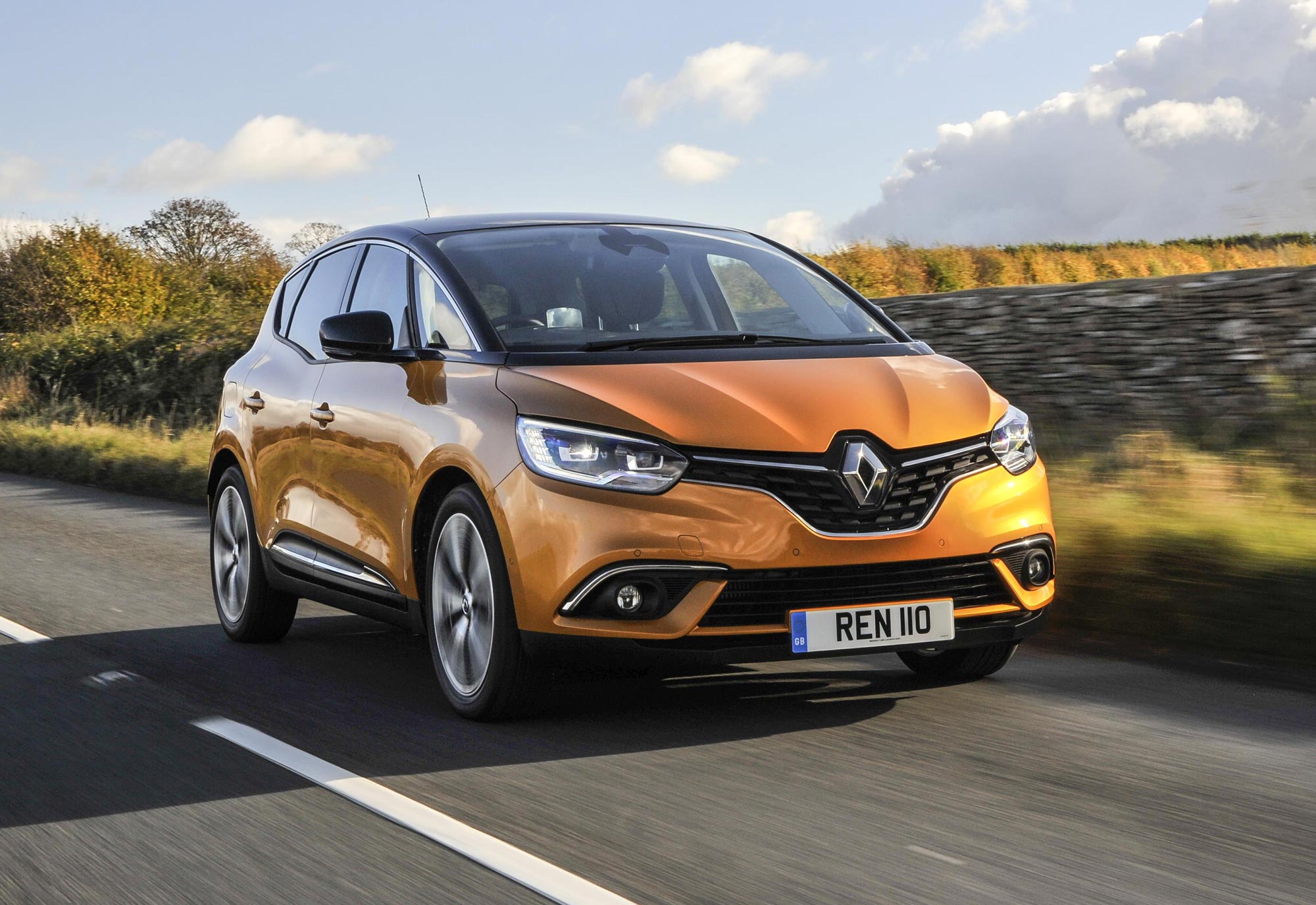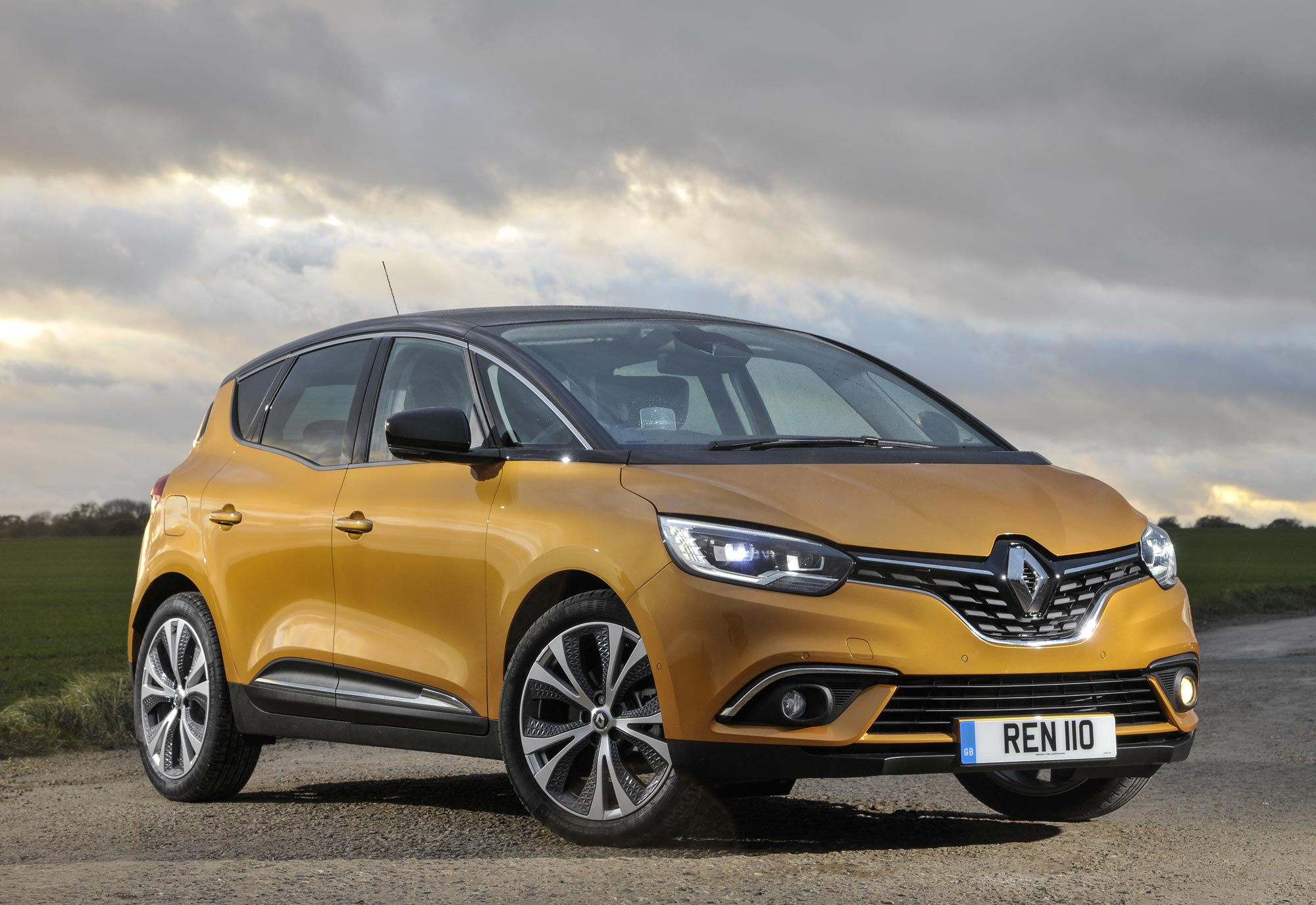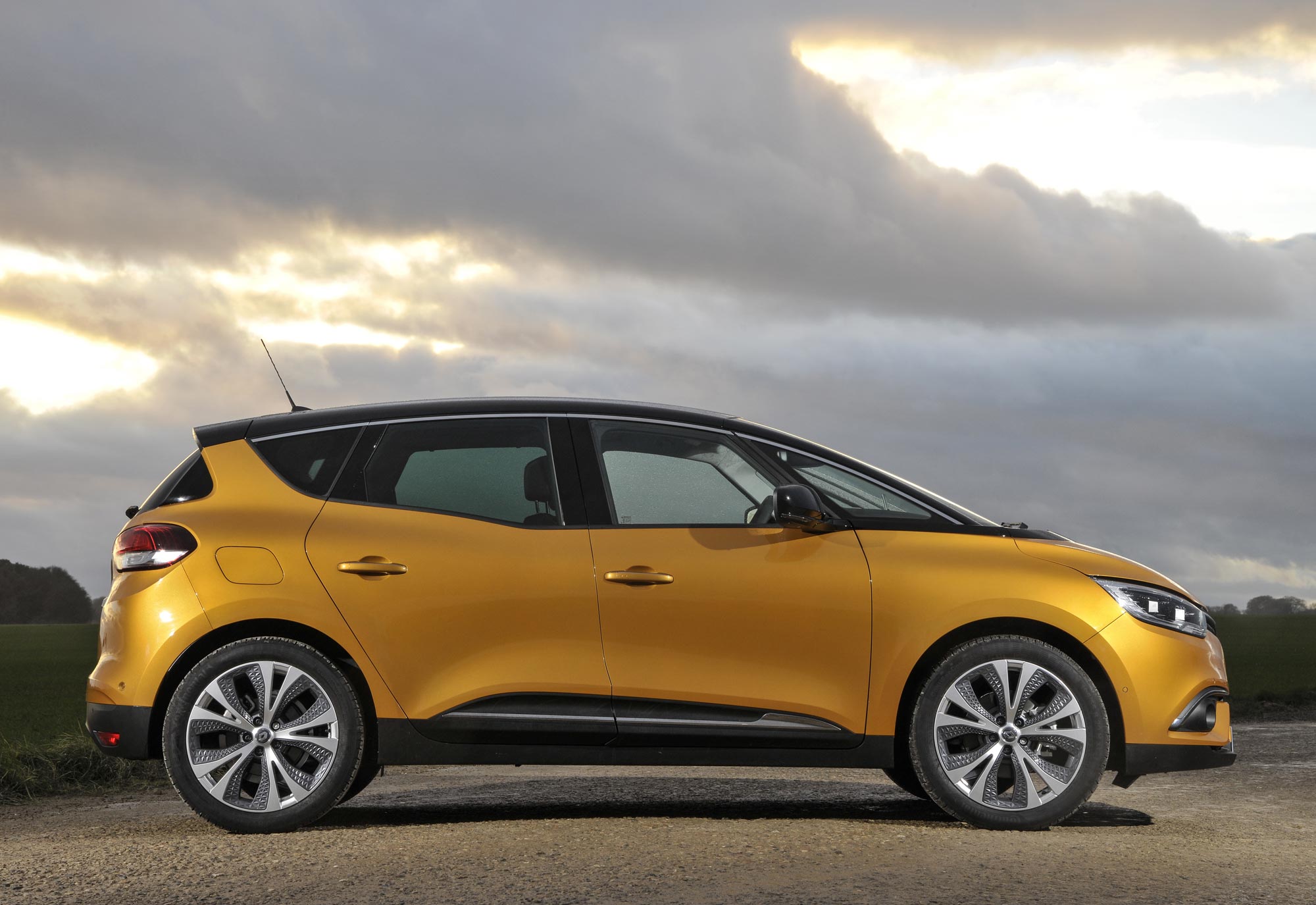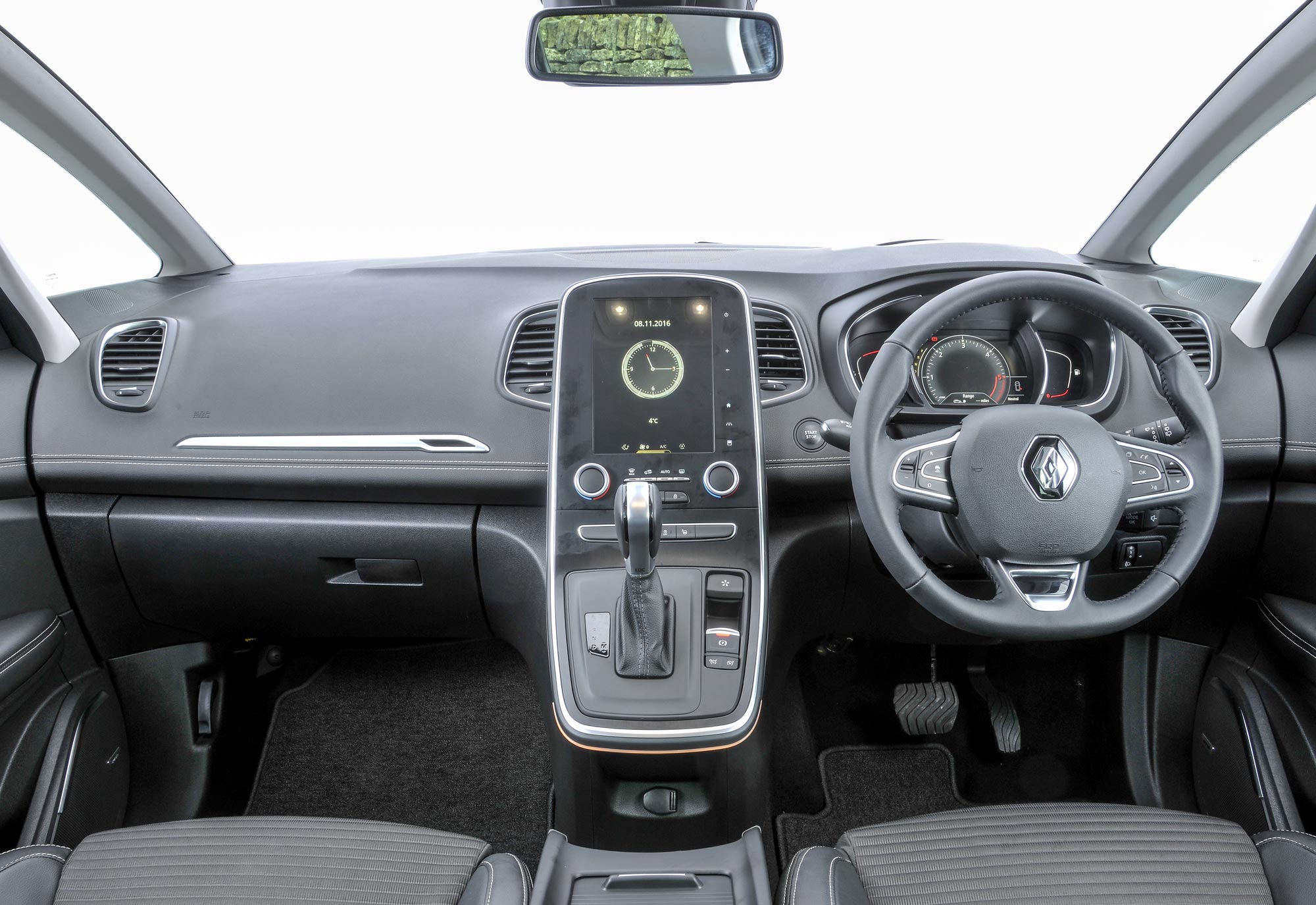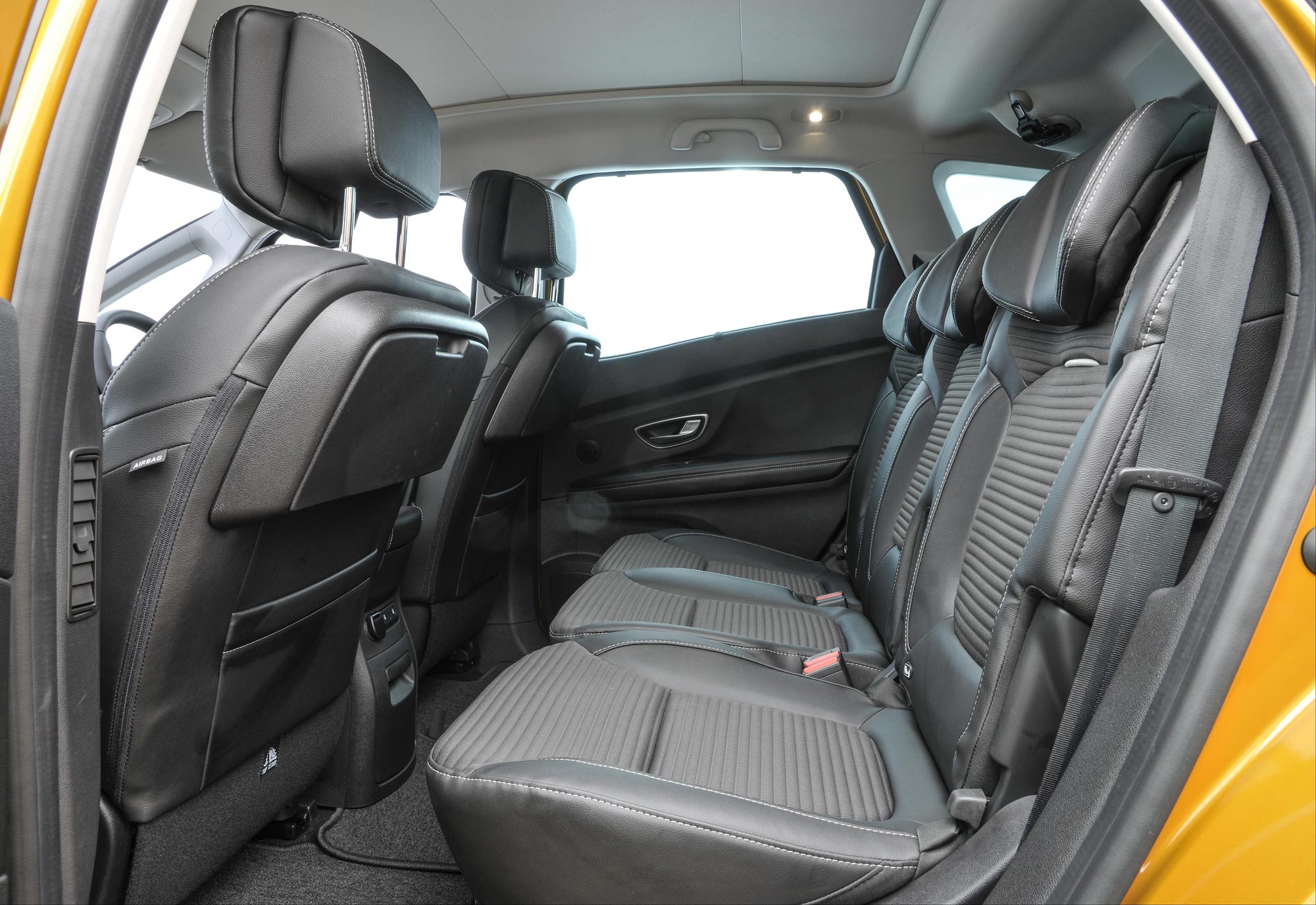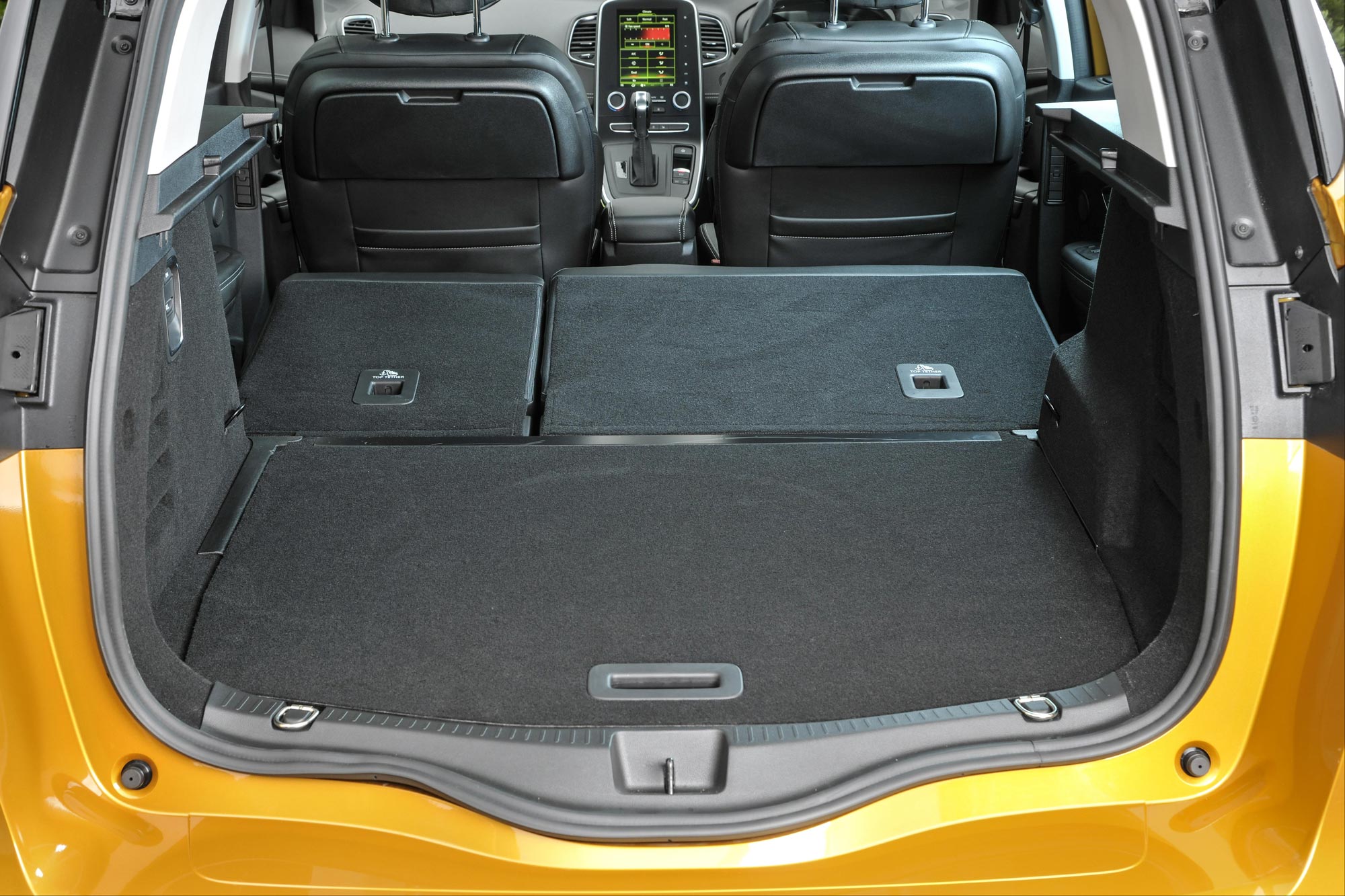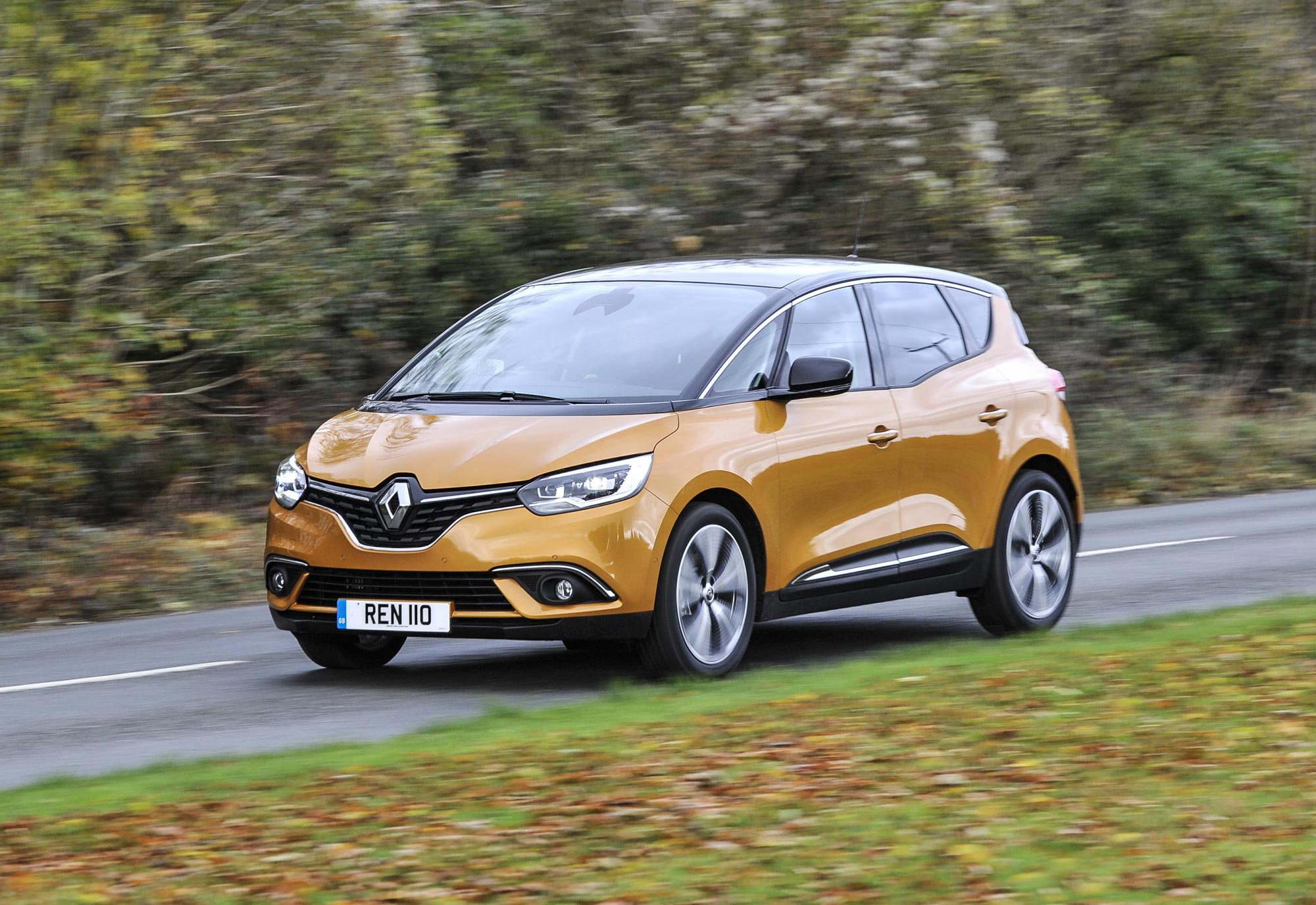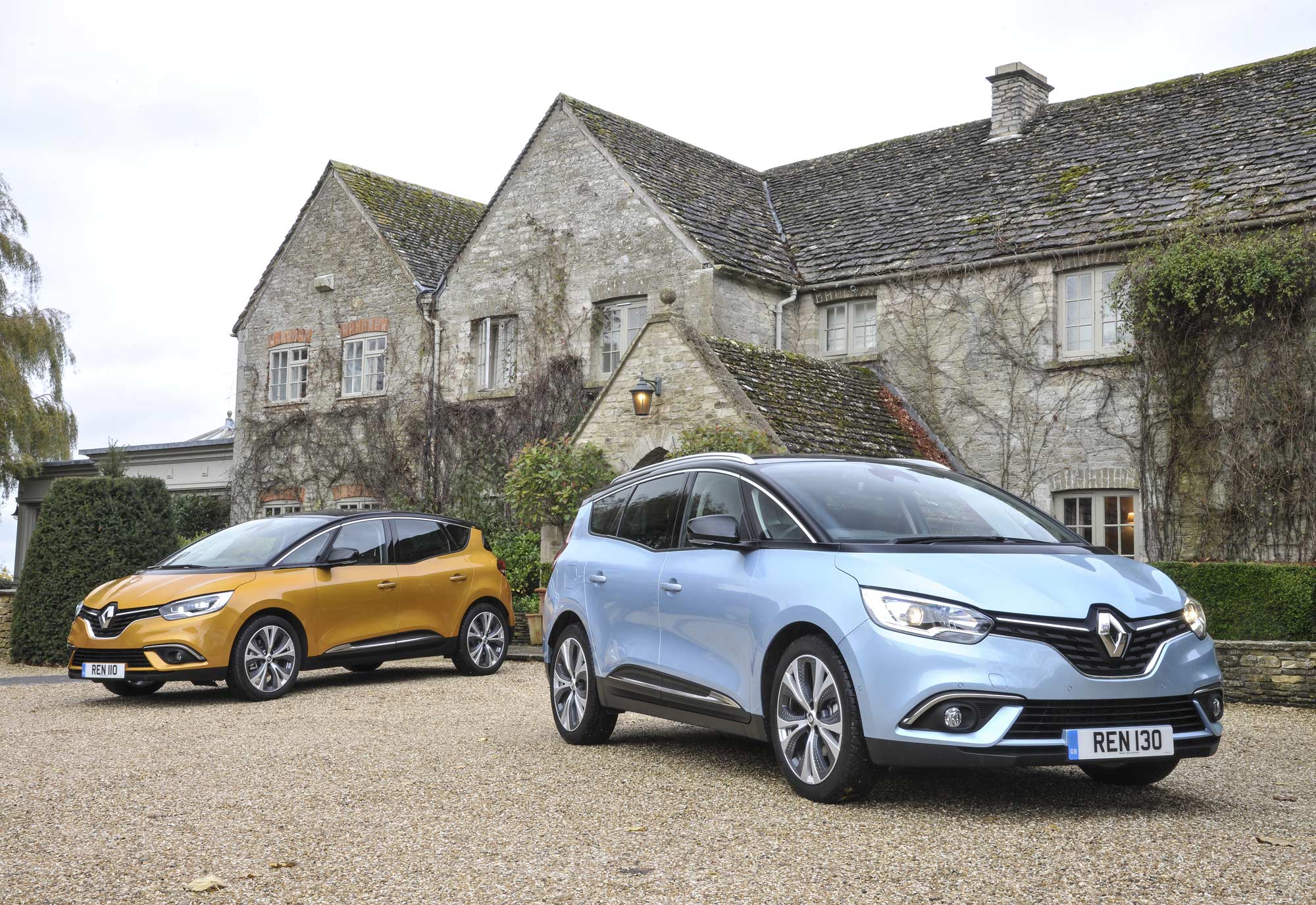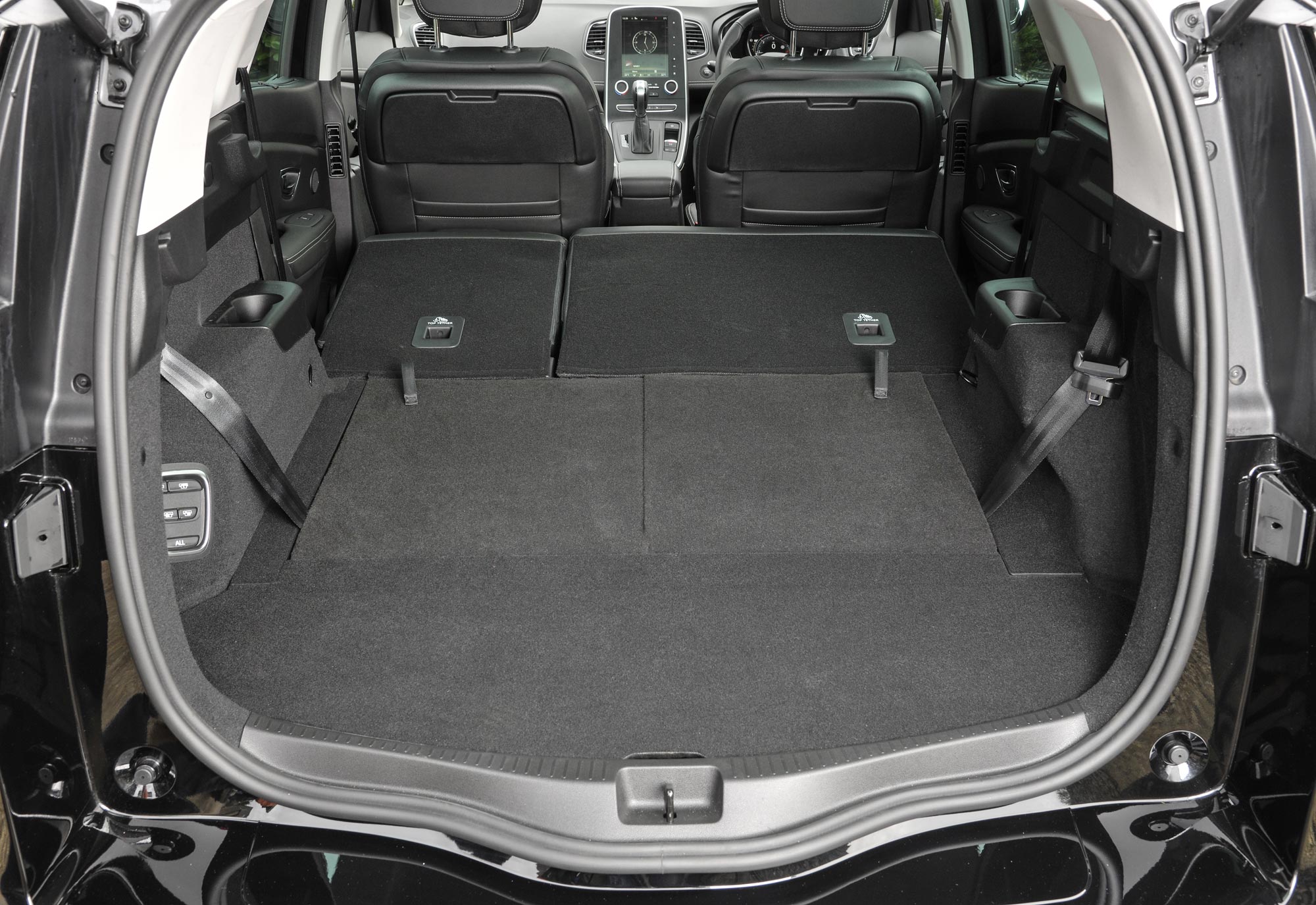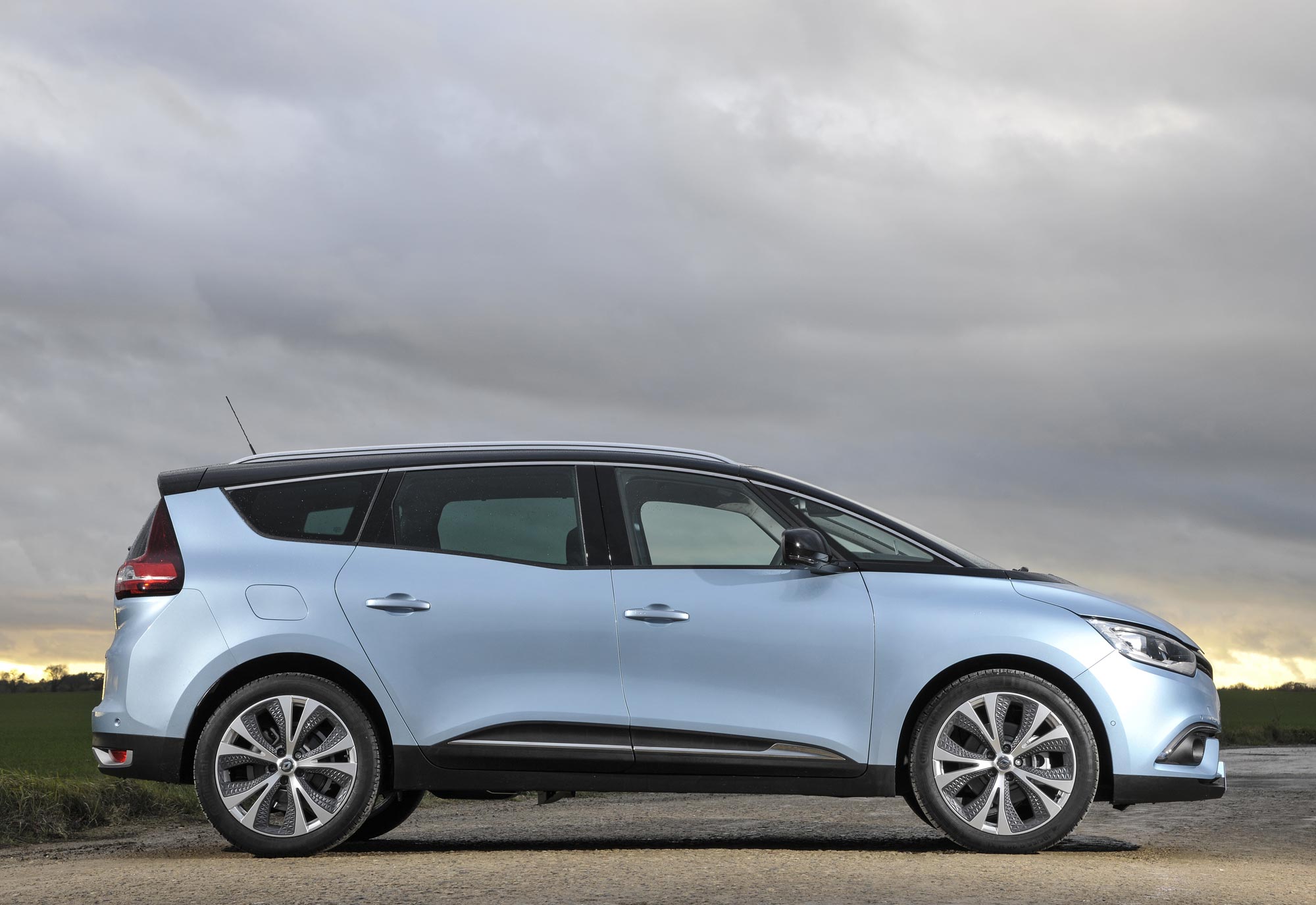Can a plain old people carrier be transformed into something sexy enough to challenge the most stylish of modern SUVs? Chris Pickering drives the all-new Renault Scenic and Grand Scenic to find out.
Back in the days before crossovers ruled the school run, the family transport of choice was a people carrier. Renault effectively invented the concept back in the eighties with the Espace. A decade later it created the compact people carrier with the original Scénic, which has since evolved across four different generations.
This latest model brings a dash of glamour to the segment, with swooping lines and standard-fit 20-inch wheels. To our eyes it’s probably the best looking people carrier ever made, although that does risk damning it with faint praise.
Inside, it’s a similar deal. There are plenty of pleasing curves, decent quality materials and a simple layout, made possible by relegating a lot of the buttons to a large tablet-style touchscreen in the centre of the dash. The A-pillars stretch out in front of you giving a feel of space, although they do also make the Scénic feel rather bigger than it actually is – something that’s exaggerated by the rather lofty driving position.
The basics are all correct, though. The seats are comfy, there’s a reasonable view out for both front and rear passengers and plenty of flexibility in the seating arrangements. Standard models come with five seats, while the extended wheelbase Grand Scénic – identical in most other respects – comes with a collapsible third row, making it an occasional seven-seater. Adults will struggle to get comfortable in the third row, however, and the back of the standard Scénic isn’t as commodious as you might expect. It’s fine for kids, though, and there are the obligatory ISOFIX points on the outer seats of the middle row, plus the front passenger seat.
With the third row folded down there’s a generous 596 litres of boot space in the Grand Scénic (572 litres in the standard car), which extends to more than 1900 litres with the middle row collapsed. That’s more than most of its competitors, and with the resulting flat floor its carrying capacity is almost van-like.
On the road there’s little to choose between the two variants. Both have precise, alert steering and a decent resistance to body roll. The trade-off is a somewhat crashy low-speed ride, but that’s the price you pay for those concept car wheels. There’s even a Sport mode in Multi-Sense system that comes on most models, which sharpens up the throttle response and adds more weight to the steering. It feels a tad redundant in a car like this, though. Personally we’d trade some dynamic polish for a bit more comfort where family duties are concerned.
There are three diesels and two petrols available across the range. Opting for the Grand Scénic knocks a couple of mpg off and adds half a second or so to the 0-to-62 mph time in most cases, but there’s not a great deal to choose between them.
We sampled the Grand Scénic with the dCi 130 diesel engine in the upper-mid spec Dynamique S Nav form. It’s a reasonably smooth engine, although it is a touch vocal at high revs, and there’s also a degree of wind and road noise to contend with.
According to the official figures the dCi 130 is good for 61.4 mpg and 119 g/m of CO2 in Grand Scénic form, with the standard car is rated at 62.8 mpg and 116 g/km with the same engine. That puts it towards the more frugal end of the class, while performance is more than adequate in the real-world, despite a leisurely 11.4 second 0-to-62 mph time.
There’s a commendable amount of standard equipment on the Dynamique S Nav, including DAB radio, TomTom Live navigation (with real-time traffic updates), a head up display and a full-length sunroof.
As tested, our car came with a number of options, including a Bose premium sound system, full LED headlights and a variety of driver assistance features. These included the £500 parking assistance pack, which adds hands-free automatic parking, 360 degree parking sensors and a blind spot detection system. There was also the premium safety pack, which adds active cruise control, safety distance warning and autonomous emergency braking (AEB) for £500. In total, it bumped the price up from £28,445 to £31,085
For comparison, the base spec 1.2-litre petrol variant starts at £23,375 (£21,445 for the standard Scénic) and prices range up to £30,645 and £32,445 respectively for the top-spec Signature Nav in 160 hp diesel auto form.
Overall then, the Scénic and Grand Scénic represent decent value for money, with eye-catching looks, pleasing interiors and bags of luggage space. Throw in a reassuring 5-star Euro NCAP safety rating, plus a four-year 100,000 mile warranty, and it should be enough to tempt some of those families back into their people carriers.

